A new study proposed that supermassive black holes could form directly from dark matter in high-density regions near the centers of galaxies, possibly explaining how these monsters came into existence early in our universe. Plus, a round-up of climate and nature news, including how satellites captured the effects of dingo management on the ecosystem.
Media
Transcript
Hello and welcome to the Daily Space. I am your host Dr. Pamela Gay.
And I am your host Beth Johnson.
And we are here to put science in your brain.

As a space and astronomy news program, we don’t generally have to worry about relaying too much depressing news. There is the occasional exploded rocket or satellite that misses an orbit, but except for the thankfully rare loss of life among astronauts, what we talk about is fairly upbeat.
But then there are days like today when we’re reminded that Earth is a planet, and as we cover our own world from a scientific standpoint, things aren’t always that great.
In the past, we’ve talked about planet-obscuring dust storms on Mars, and now, we have Earth images from the NOAA-20 spacecraft depicting continent-obscuring dust here on Earth. Those of you living in Europe may already know from your weather forecasts that a massive dust plume, stirred up across Northern Africa, and is now sending dust out over the Atlantic Ocean and northward toward Europe. This wider perspective image from the DSCOVR satellite shows more of that dust as a beige cloud sweeping off the African continent.
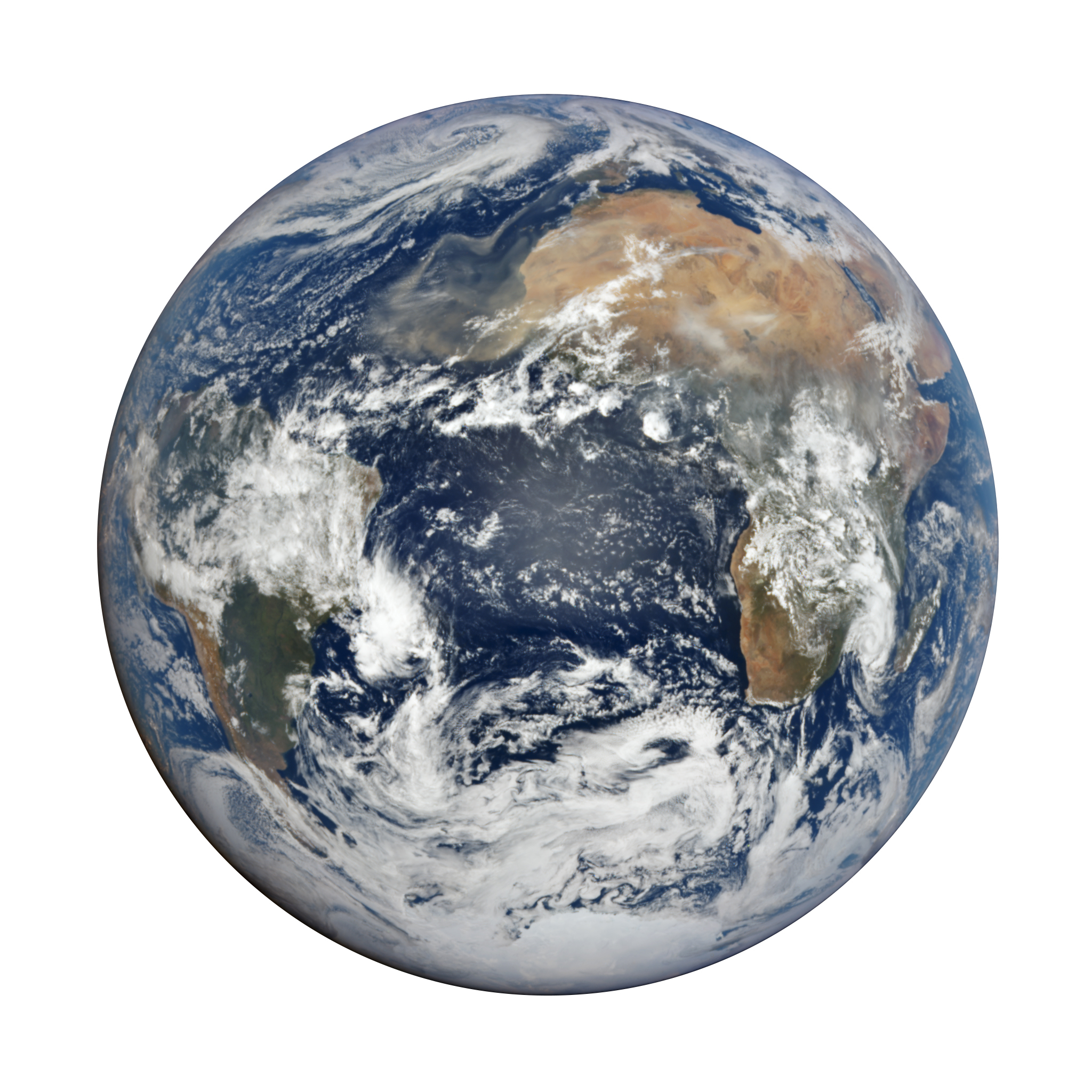
While the images are eerily beautiful and make for neat comparative science between Earth and Mars, they point to a more human tragedy. In southern France, the air is dense with fine particulates, and the sky is beige from the dust blocking out the sky. This dust is significantly more intense than past dust storms, and this doesn’t bode well for folks living at the base of the Alps. This dust, as it settles out of the air, coats everything, including the snow, which will then melt more readily and melt earlier in the season.
In the past, these kinds of dust plumes have even carried microbes from the Sahara to the glaciers of the Alps. According to the Barcelona Dust Forecast Center, this weekend Saharan dust is expected over the Iberian peninsula and the western Mediterranean. Looking at these forecasts, I’m kind of glad that wearing masks is becoming more normalized; this isn’t something you want in your lungs, and unfortunately, these kinds of dust events are likely to also become the new normal.
As our planet’s carbon dioxide levels rise, and with it the temperatures, we’re seeing the oceans and land driving winds in new ways. In Texas, these changes led to a massive arctic blast last week, as the jet stream failed to trap the arctic cold in the Arctic.
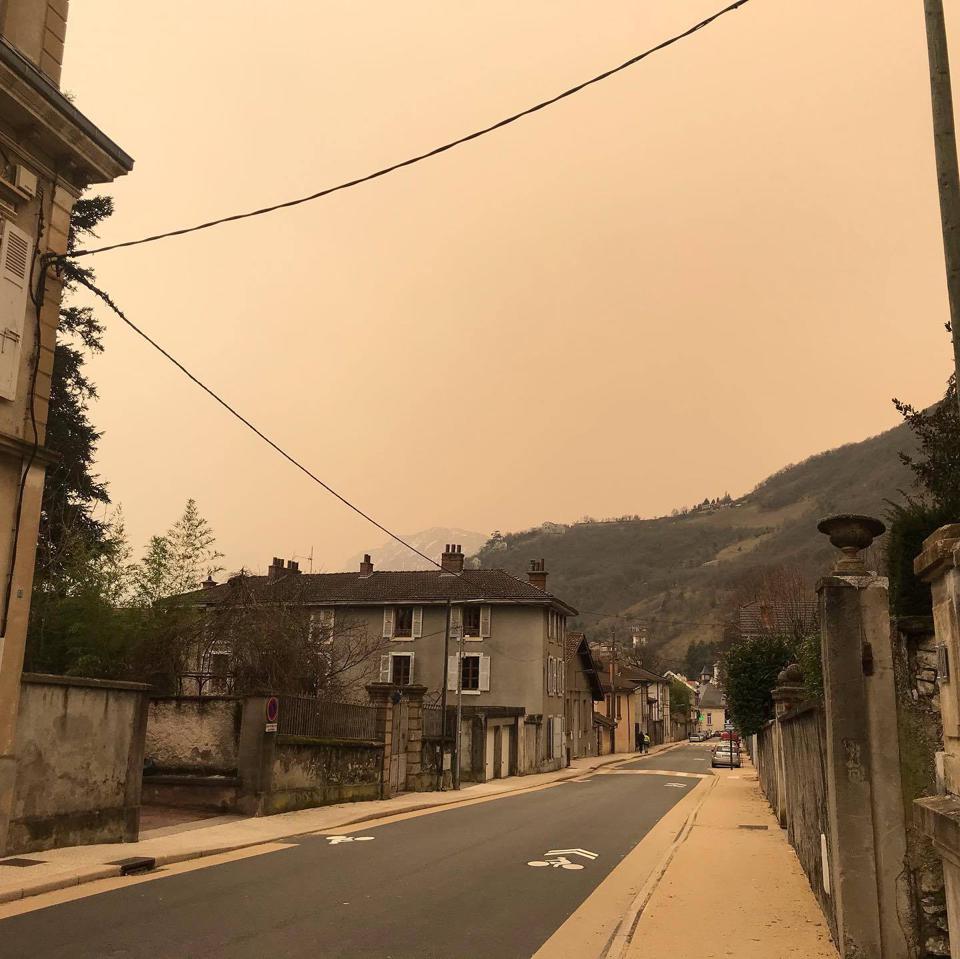
New research from Jordan Abell that appears in the journal Nature tries to understand just how the winds are changing by studying what the earth was like last time carbon dioxide and temperatures were this high. That last time? It was the Pliocene epoch, three million years ago, that time when early hominids were emerging and giant mammals still wandered the Earth. Looking at the geologic record to see where the wind carried dust during that time period, this research team discovered that Earth’s westerly tradewinds migrate more northward as the temperatures warm.
There is no way to know on what timescale things will change, but over time, perhaps centuries, this change in the wind will mean less rain for North America, Europe, parts of Australia, and New Zealand. Where things grow will change, and deserts will migrate. This has happened before, but this is the first time such change has been so rapid, and the next question becomes, can life adapt quickly enough to the changes that are coming.
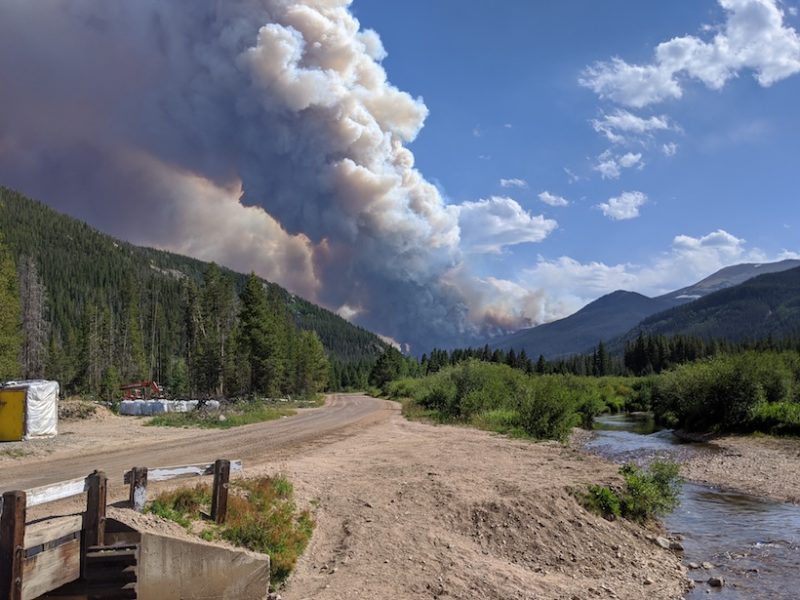
Changes in rainfall and winds are just some of the factors that affect forecasts for fire season. New research from Steven Brey and company appearing in Earth’s Future, indicates that figuring out just where fires are likely to break out and how widespread they can become is more complicated than anyone would like.
The primary indicator of if it will be a bad fire year is the vapor pressure deficit; this is the difference between how much moisture is in the air and how much moisture could be in the air if it were saturated. While dry air generally leads to more fire, the devil is in the details, and those details include precipitation, evaporation, relative humidity, root zone soil moisture, and wind speed.
In trying to understand how widespread fires will be in the future, this team concludes, and here I quote from the paper: We show that increases in burn area are likely as many climate models suggest the future will be drier. However, we find that future wildfire burn area estimates are lower whenever and wherever the importance of aridity is reduced.
Put another way, if we let our land dry and see a reduction in plant life and agriculture, more will burn. If we want to offset the effects of climate change, we need to find ways to maintain soil moisture as rains recede.
Climate change doesn’t affect just the landscape. It also has a huge impact on life in cities, and unfortunately, studies are finding that how someone is affected is strongly biased by an area’s poverty levels, and those generally reflect racial divides.

In trying to mitigate the worst effects of climate change, the United Nations has devised a series of global goals that should both improve quality of life and improve our world’s future. A new study looks at how we’re doing with respect to three of these goals, which include providing everyone with access to affordable public transport, adequate waste management systems, and green spaces.
To measure what was going on, researchers combined data from OpenStreetMap on transport and used satellite data to study green spaces and waste handling. By combining this data with demographic information, it became possible to understand where problems may arise, and the answer was everywhere. No city over ten million had equal access to people of all demographics, and very few smaller cities scored highly in both environmental performance and inclusivity. Those few exceptions included Freetown, Sierra Leone; Darwin, Australia; and San Jose, California.
To quote from a summary of this research prepared by Eos: More than half of the 164 cities fell into the category of good overall performance but with lower-income neighborhoods bearing a disproportionate share of environmental burdens. … Reasons for these inequalities are linked with local contexts. In inner-city communities, air pollution is often worse, and a lack of tree cover and green space can result in dangerously high summer temperatures through the urban heat island effect.
Essentially, as too often happens, the worst effects will be lived by those least able to afford to find solutions. As a global civilization, we need to do better to ensure we provide all humans an equal chance to at least have a cool green space to escape to. We’ll include links to the full dataset on our website, DailySpace.org.
Dingoes — those scruffy wild dogs on the Australian Outback usually portrayed as a nuisance? It turns out they’re good for the ecosystem, according to a new study from the University of New South Wales Sydney. The study, published in Landscape Ecology, looked at 32 years of satellite data from NASA and the United States Geological Survey’s Landsat program. Previous dingo research has been site-based or relied on drone imagery. This satellite data has made landscape-wide analysis possible for the first time and it revealed something very interesting.
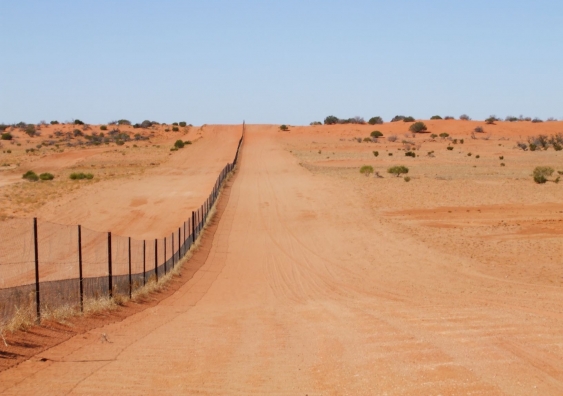
A time-lapse video of satellite images posted on UNSW’s YouTube channel reveals a pronounced straight line along the NSW state border where a large part of the Dingo Fence runs. Vegetation inside the fence where there are no dingoes had poorer long-term growth than vegetation in areas with dingoes.
The Dingo Fence was built in the 1880s to protect livestock; it spans parts of Queensland, New South Wales, and South Australia, and at 5,600 kilometers long, it’s one of the longest structures in the world and has been extremely successful at keeping dingoes out. But while this might keep livestock and other fauna from getting chomped on by hungry dingoes, it’s not so great for the local flora.
In this data compilation, we can see the long-term effects of removing dingoes from the local ecosystem, and we can see those long-term effects from space. That’s right, the environmental impact of removing dingoes is visible from space. The Great Wall of China isn’t even visible from space!
Professor Mike Letnic, senior author of the study and researcher at UNSW’s Centre For Ecosystem Science, said in an interview: When dingoes are removed, kangaroo numbers increase, which can lead to overgrazing. This has follow-on effects to the entire ecosystem.
Those follow-on effects are a process called a trophic cascade, which in this case means fewer dingoes lead to an increase in kangaroo populations, which leads to overgrazing, which reduces vegetation and damages the quality of the soil, which causes even less vegetation, which hinders the survival of smaller animals. This goes to show how precariously connected everything on our planet is.
According to Professor Letnic, the fence’s sharp divide between dingo and non-dingo areas provides a rare opportunity to observe the indirect role of an apex predator and the far-reaching effects of removing apex predators from an ecosystem. And this was all made possible by satellite data.
Satellite imagery usually only looks at photosynthesizing vegetation, meaning plant life that’s visibly green. But the UNSW researchers used a model to factor in non-green vegetation such as shrubs, dry grasses, twigs, branches, and leaf litter. Stuff that’s important to a desert ecosystem like the one found in the Australian Outback. The model was developed by the Joint Remote Sensing Research Program, a collaborative group that includes UNSW.
According to lead author Dr. Adrian Fisher, a remote sensing specialist at UNSW, there were other contributing factors to the difference in vegetation such as differing rainfall patterns and land use, but the dingoes definitely played a central role. Dr. Fisher went on to say: Our study is an example of how satellite technology can be used in big picture environmental research.
They hope to next use the Landsat images, which are freely available for download, to study how different amounts of vegetation can influence bushfire frequency.
While this dingo study can be seen as yet another example of how human-made structures are negatively impacting the planet, it also shows that even some scruffy wild dogs can play an important role in making the earth better for everyone.
All right, the next story isn’t as cheerful as dingos making for a healthy ecosystem, but it’s still a pretty cool mystery that may be solved.
One of the issues astronomy is currently scratching its head at is how the universe formed massive galaxies so fast. For the first roughly 400,000 years, everything was a hot dense soup of colliding photons, electrons, nuclei, and other particles that were expanding and cooling but were too dense and hot to form atoms let alone galaxies. One day things did get cold enough to form atoms — that was about year 400,000 give or take — but they were still too hot for everything else. And the universe kept expanding and cooling, and we expected that stuff would start forming a few hundred million years later. Somehow, we are finding as we build bigger and better telescopes, galaxies weren’t so much starting to form; they were fully formed.
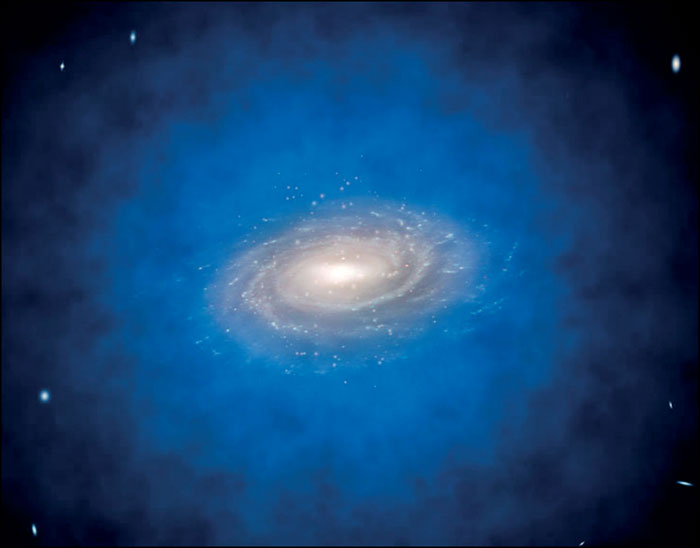
And this is deeply confusing.
Here is the problem: our universe is mostly empty space. While the modern universe has all sorts of big structures that shine in the sky, all the stuff in those structures was initially spread out pretty uniformly, and it should take time for the material to gravitationally come together.
The luminous matter – baryonic matter – isn’t the primary stuff of the universe, however. There is also dark matter – stuff that, as the name implies, refuses to interact with light. It is a whole lot more prevalent, and as we’ve realized galaxies formed early, astronomers built theories for how massive clouds of dark matter could come together early in the universe and pull in the regular matter to start galaxies earlier. This helped, but it still didn’t explain how these galaxies somehow built up supermassive black holes in their centers so fast.
So the new question became: can you make a supermassive black hole out of dark matter? It’s just stuff after all; there shouldn’t be a reason it can’t make a black hole, but it’s a matter of how would that work. Dark matter, as far as we know, consists of particles that don’t like to interact with each other or anything else, including the electromagnetic force. The question then becomes: if you pull enough dark matter into a small enough region, will it tend to collapse under gravity or will it support itself through gas pressure? This is sort of like asking: will air in a cooling room keep filling the room, or collapse condense on the floor? Eventually, it will collapse but not at a temperature we’re going to get on Earth. It turns out, however, that dark matter may collapse into black holes under the conditions that existed in the early universe.
In a new paper in Monthly Notices of the Royal Astronomical Society, with lead author Carlos Arguelles, researchers examine what conditions need to occur for dark matter to collapse into a supermassive black hole. They find that the answer depends on just how big dark matter particles may be. For particles in the TeV range – the size of a Neutrino for instance – a sphere of a billion solar masses can collapse under its own gravity to form a supermassive black hole as early as 500 million years after the Big Bang. Bigger masses could form even earlier, and this is consistent with what we’re seeing.
It’s kind of weird to think that an invisible component of our universe – dark matter – can form massive halos that collapse into supermassive black holes that are also invisible but shape everything in the galaxies that grow around them. In our universe, the brightest shining things are truly being governed by invisible hands or at least gravity from invisible sources.
This is also a case of both and. We originally thought supermassive black holes formed through the more gradual build-up of regular matter inside clouds of dark matter. That still happens. That still happens more slowly.
Our universe just found a way to fast-track the creation of galaxies, proving once again that there are often many ways to do things, and the universe doesn’t like to be limited in its options.
Here in the United States, February is designated as Black History Month. During this month, many people and organizations make a point of celebrating the oft-times overlooked contributions of Black Americans to a variety of fields, including the sciences. No list we could create will ever be comprehensive enough to cover all of the amazing people whose names we should know alongside Einstein and Hawking and Sagan, but that doesn’t mean we shouldn’t try.
I also acknowledge that, as a white woman, my position in this country comes with a lot of privilege. I am going to use that position to help make the following names and accomplishments better known.
Benjamin Banneker (November 9, 1731 – October 19, 1806) was a free Black American mathematician, author, surveyor, landowner, and farmer considered to be the first Black astronomer in the United States. He worked as an assistant surveyor with Andrew Ellicott, mapping the lands and creating the boundaries for the new federal capital in Washington, D.C.

Arthur B.C. Walker, Jr. (August 24, 1936 – April 29, 2001) was an African American physicist, who studied the Sun’s atmosphere in both ultraviolet and X-rays. He later developed and tested the X-ray mirror technology that is now used in the SOHO spacecraft. In 1986, he chaired the committee that investigated the Challenger space shuttle disaster.

George Carruthers (October 1, 1939-December 26, 2020) was an inventor, physicist, engineer, and space scientist. He perfected an ultraviolet camera/spectrograph for NASA to use when it launched Apollo 16.

Claudia Alexander (May 30, 1959-July 11, 2015) was a research scientist who specialized in geophysics and planetary science. She worked for the U.S. Geological Survey and NASA’s Jet Propulsion Laboratory on missions that included Galileo and Rosetta.

Beth A. Brown (July 15, 1969 – October 5, 2008) was a NASA astrophysicist who specialized in the study of black holes and the emission of x-ray radiation from galaxies. In her work at NASA’s Goddard Space Flight Center, she championed science communications and higher education.
Again, these are but a few people we think you should know. We will include links to full biographies as well as more lists of amazing Black Americans in our show notes.

As a final note, earlier today, NASA renamed the NASA Headquarters building in Washington, D.C., in honor of ‘Hidden Figure’ Mary W. Jackson. Jackson was the first African American female engineer at NASA and began her career with the agency in the segregated West Area Computing Unit of NASA’s Langley Research Center in Hampton, Virginia. She posthumously received the Congressional Gold Medal in 2019.
This has been the Daily Space.
Learn More
Dust Heading For Europe and Dust Systems Shifting Due to Climate Change
- NASA Earth Observatory article
- Eos article
- “Poleward and weakened westerlies during Pliocene warmth,” Jordan T. Abell et al., 2021 January 6, Nature
Analyzing Environmental Predictors of Western U.S. Wildfires
- Eos article
- “Past Variance and Future Projections of the Environmental Conditions Driving Western U.S. Summertime Wildfire Burn Area,” Steven J. Brey et al., 2020 July 17, Earth’s Future
A Look at Natural Hazards, Climate Change, Urban Living, and Equity
- Natural Hazards Have Unnatural Impacts—What More Can Science Do? (Eos)
- Where Do People Fit into a Global Hazard Model? (Eos)
- Dangerous Heat, Unequal Consequences (Eos)
- Using Big Data to Measure Environmental Inclusivity in Cities (Eos)
- “Measuring What Matters, Where It Matters: A Spatially Explicit Urban Environment and Social Inclusion Index for the Sustainable Development Goals,” Angel Hsu et al., 2020 December 14, Frontiers in Sustainable Cities
Dingo Removal Leads to a Trophic Cascade of Ecosystem Issues
- UNSW-Sydney press release
- “Remote sensing of trophic cascades: multi‐temporal Landsat imagery reveals vegetation change driven by the removal of an apex predator,” Adrian G. Fisher et al., 2021 February 11, Landscape Ecology
Supermassive Black Holes Could Form From Dark Matter
- Royal Astronomical Society press release
- “On the formation and stability of fermionic dark matter haloes in a cosmological framework,” Carlos R Argüelles et al., 2020 December 31, Monthly Notices of the Royal Astronomical Society
CosmoQuest Honors Black Americans in Astronomy
- SETI Institute article
- #BlackInAstro: Black Representation in Astro/Physics and the Impact of Discrimination (astrobites)
- NASA Black History Month
- Black History Month 2021 Profiles (AAS)
Credits
Written by Pamela Gay, Beth Johnson, and Ally Pelphrey
Hosted by Pamela Gay and Beth Johnson
Audio and Video Editing by Ally Pelphrey
Content Editing by Beth Johnson
Intro and Outro music by Kevin MacLeod, https://incompetech.com/music/


 We record most shows live, on Twitch. Follow us today to get alerts when we go live.
We record most shows live, on Twitch. Follow us today to get alerts when we go live.